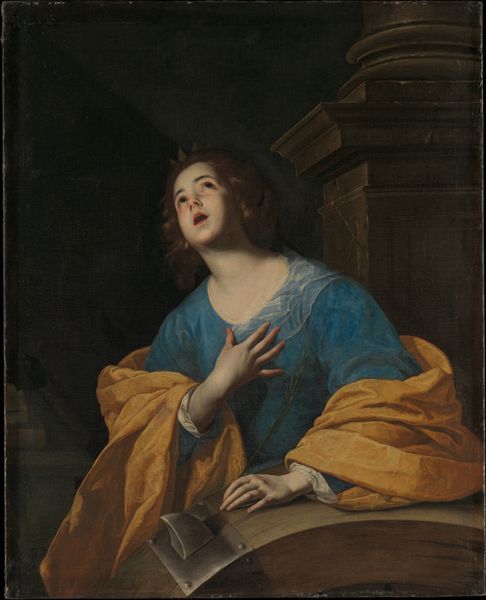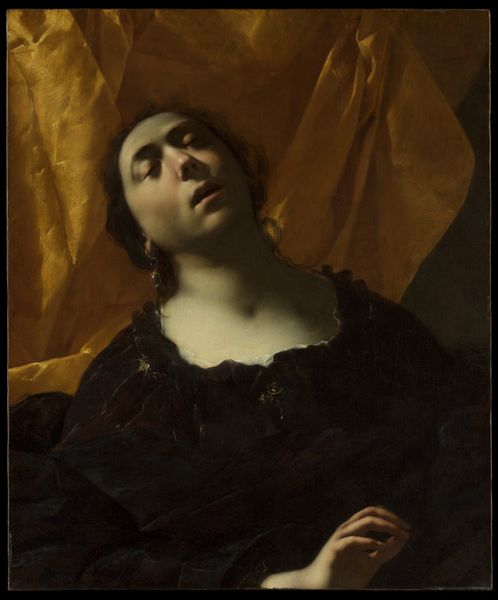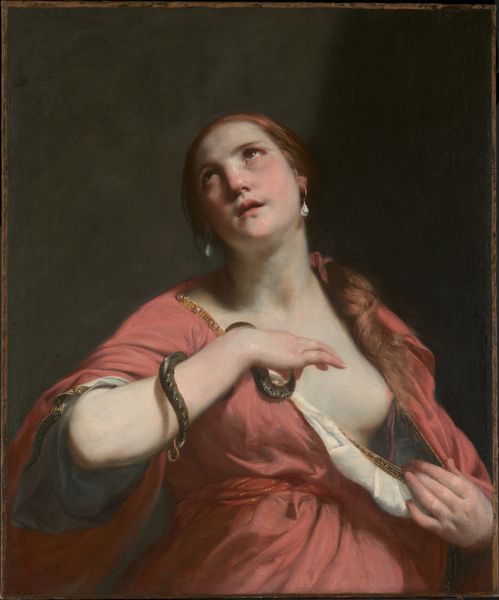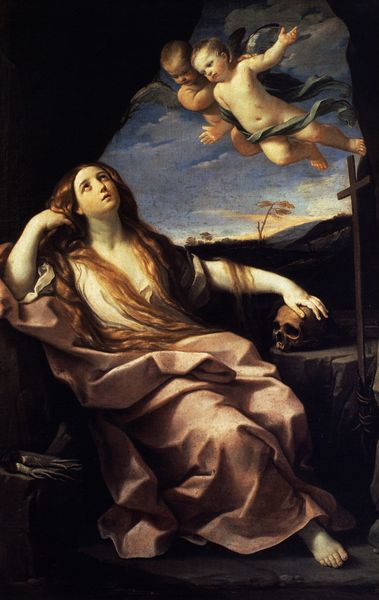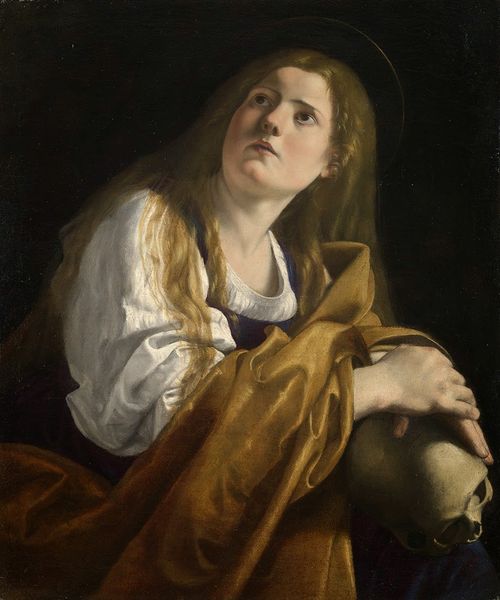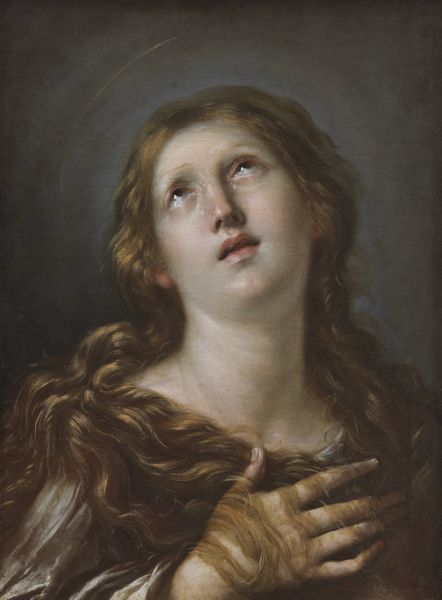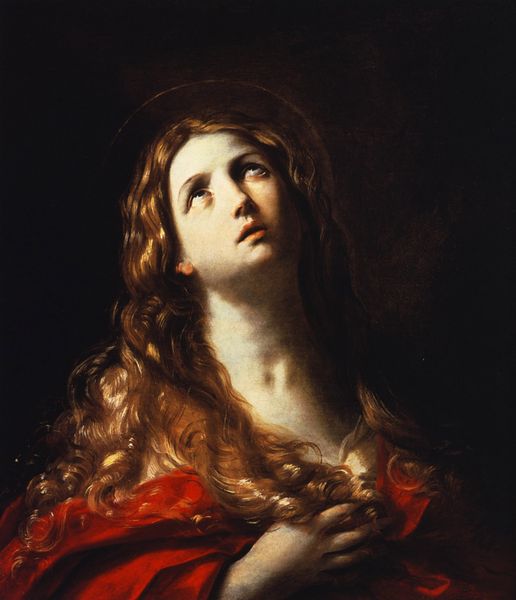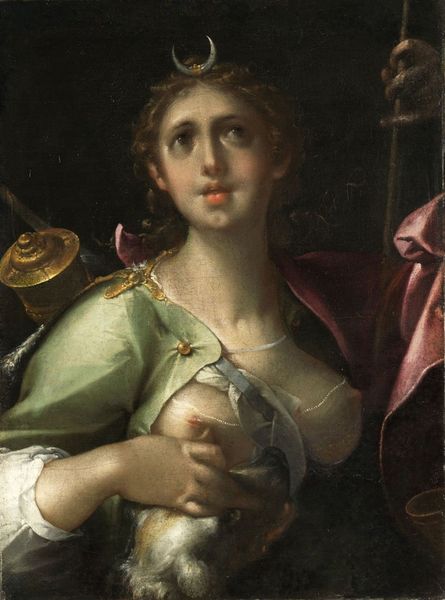
oil-paint
#
portrait
#
baroque
#
oil-paint
#
sculpture
#
oil painting
#
portrait head and shoulder
#
underpainting
Dimensions: height 81.5 cm, width 69 cm, depth 7 cm
Copyright: Rijks Museum: Open Domain
Editor: This oil painting, “Saint Catherine,” created sometime between 1617 and 1661 by Francesco Montelatici, is really striking. The way she looks up, and the use of light…it gives the portrait a very spiritual feeling. What symbols do you notice in this piece? Curator: Notice how the artist uses certain iconic objects—the palm frond, the wheel? These aren't just props, they’re like coded language. The palm represents victory, specifically martyrdom in this context. And the wheel, of course, speaks directly to the story of Saint Catherine and the instrument of her attempted execution. They connect us to a long chain of cultural memory. Editor: So, it's not just about a single image, but layers of stories. Is there something psychological at play here too? Curator: Absolutely! The upturned gaze, the slightly parted lips - these details convey ecstasy, a feeling both deeply personal and resonant with centuries of religious experience. The portrait uses conventions familiar from portrayals of female saints to create this feeling. We see similar expressions used to denote feelings of romantic love, suffering or pain, adding further depth to our interpretation of Saint Catherine's rapture. What do you feel when you see it? Editor: I feel this deep connection to the past and how symbols continue to have meaning. But it also evokes this strange intimacy; the painting makes me feel connected with what she is going through. Curator: Precisely. That’s the enduring power of these symbols. Montelatici’s use of those symbols invites viewers to bridge time and connect with universal themes. Editor: I hadn't considered all the layers packed into these seemingly simple objects. It's made me rethink how I look at art, seeing it as more than just an image. Curator: Indeed. It's about how visual language speaks across centuries.
Comments
No comments
Be the first to comment and join the conversation on the ultimate creative platform.
